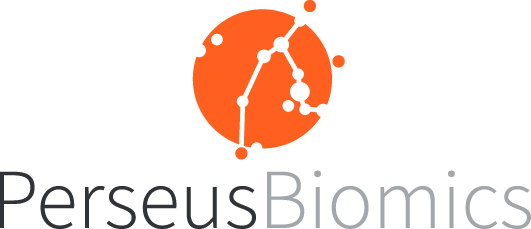The Future of Metagenomics: Leaving the Limitations of Sequencing Behind
In the exciting field of metagenomics, sequencing technologies have played a pivotal role in unravelling the role of the microbiome in health and disease. Without sequencing, major breakthroughs such as such the "Human Microbiome Project" would not have been possible.
But let's face it, even superheroes have their weaknesses. The fact of the matter is that the sequencing technologies have intrinsic limitations when it comes to profiling complex samples containing a rich diversity of genetic materials, such as microbiome samples.
Buckle up, as we discuss how the complexity and diversity of sequencing workflows leads to major standardization and reproducibility challenges, that can cripple your microbiome science.
"What got us here won't get us there.”
As more and more publications shed light on the bias and limitations of sequencing in metagenomics, the gap grows bigger between the needs of microbiome applications across the industry and what sequencing can deliver. To cite the book title from Marshall Goldsmith's, a tale of adaptation and transformation to achieve new heights: "What got you here won't get you there”.
Especially with the rise of novel alternative to sequencing for metagenomics, it is important to be fully aware of the sequencing weaknesses when contemplating alternative solutions to sequencing.
The long (too long?) list of sequencing shortcomings in metagenomics
Experimental Bias:
Sequencing technologies introduce inherent biases at various stages, leading to underestimation or overestimation of diversity. These biases can undermine the accuracy of our conclusions about the microbiome's composition and function¹ ² ³.
Sequencing Depth:
The sensitivity of detecting rare taxa or low-abundance pathogens is limited by sequencing depth. The cost and computational resources required for high-depth analysis can become significant obstacles⁴.
Assembly Challenges:
Complex samples can pose assembly challenges, hindering accurate analysis. While long-read sequencing technologies offer improved capabilities, they come at a higher cost⁴.
Structural Variations:
Short-read sequencing struggles with detecting important structural variations, impairing our understanding of their implications in the context of the microbiome⁵.
Cost:
The high expenses associated with shotgun sequencing can strain resources, limiting the scope and scale of research projects and hindering routine testing in diagnostic and clinical settings⁴. More often than not, 16S sequencing is preferred over shotgun sequencing despite its much lower performance, solely on financial grounds.
Data Analysis:
Sequencing not only drains our pockets but also presents challenges in data analysis. Different bioinformatics pipelines process raw sequencing data in slightly different ways, with different algorithms and thresholds. The lack of standardized protocols and the need for specialized expertise further complicate the process, leading to significant inter-lab differences and inconsistent results between studies¹ ⁶.
The painful trade-off between amplicon and shotgun sequencing
Performance AND cost efficiency AND speed? With Sequencing, you can’t have it all.
To add an additional layer of complexity to the mix, in metagenomics, researchers often face the dilemma of choosing between amplicon/16S rDNA sequencing and shotgun metagenomic sequencing. Each approach has its trade-offs and limitations, and the choice depends on the specific research question and desired outcomes.
Amplicon/16S rDNA sequencing involves the sequencing of a short segment of bacterial DNA amplified by PCR. This technique is relatively affordable and widely used. However, it has very limited taxonomic resolution, typically only reaching the genus level2, and can introduce significant abundance bias due to the PCR part of the library prep. Indeed, PCR is an exponential amplification and thus amplify predominantly what is already in higher abundance. Consequently, low-abundance but important bacteria may be missed, leading to false-negative results. Significant biases in this approach can lead to misinterpretation of microbial communities⁶, and poor reproducibility of results⁷.
On the other hand, shotgun metagenomic sequencing involves the sequencing of all the DNA present in a sample, providing higher taxonomic resolution down to species and strain levels. Shotgun sequencing is more accurate than amplicon sequencing. However, more DNA to sequence and bigger datasets means that this approach is significantly more cost-intensive, both in term of sequencing consumables and bioinformatics resources.
It is also worth mentioning that neither method is fast. Sequencing runs require samples batching and it can take days or weeks to collect enough samples for a single run. In addition to the library preparation that can take at best several hours, the sequencing step itself can take several days. These long turnaround times make sequencing subpar in time-critical applications, in particular testing/diagnostics and in-process control (IPC).
Good news, there is an advantageous alternative to sequencing
Remember “what got us here won’t get us there” and so it is important to explore alternative approaches that can lead us to a wave of progress in microbial profiling. One such technology is optical mapping a technique that utilizes fluorocoding and direct optical mapping of native metagenomic DNA. DynaMAP in an Optical Mapping platform and represents a paradigm shift in metagenomics, offering solutions to the challenges posed by sequencing technologies. The technology reports high quantities of genetic information with taxonomic resolution down to the strain level. Unlike sequencing, minimal sample processing and streamlined bioinformatics minimize bias-prone workflow steps.
Optical Mapping eliminates the need for compromises between precision, accuracy, and cost-effectiveness, while also cutting turnaround times to only mere hours instead of days or weeks.
Sequencing brought us here; optical mapping will bring us there
While sequencing has been instrumental in advancing metagenomics research, it is crucial to recognize its limitations and shortcomings. Bias, sequencing depth, assembly challenges, cost, data analysis complexities, and the lack of standardized protocols all present significant challenges in the field.
As researchers continue to push the boundaries of metagenomics, it is essential to embrace new technologies that can become the future of microbial metagenomics. By doing so, we can unlock the full potential of the microbiome and gain deeper insights into its impact on human health and wellness. DynaMAP leverage the previously mentioned Optical Mapping technology to pave the way for new microbiome-based biomarkers, therapeutic targets, and routine diagnostic applications that were previously inconvenient or impossible with sequencing-based technologies.
References


